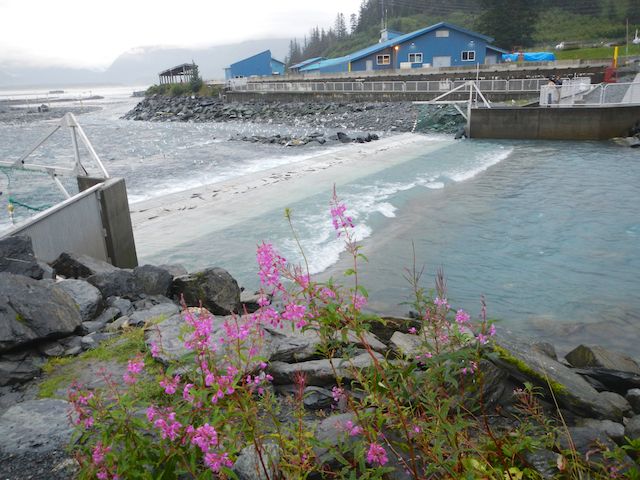The day was one of near perpetual drizzle with occasionally heavier showers so thoughts of doing walks around the Valdez coastal area were abandoned. Instead it was decided to head for the local museum and learn something about the region and its history.
Valdez with a population of about 4000 is the most important town in the Prince William Sound region. Valdez was named after the Spanish bay, Port Valdez which in turn was named in honour of a Spanish naval officer Antonio Valdes y Basan.
Valdez was founded in 1897 about 6 km east of its present location and served as a starting point for prospectors heading up to the Klondike goldfields.
As the northernmost ice-free port in North America it was chosen to be the southern terminus of the 1280 km Trans-Alaska Pipeline bringing crude oil down from Prudhoe Bay in the Arctic.
Valdez township was relocated after the disastrous five minute (9.2) earthquake of 1964 which resulted in a substantial section of the town’s waterfront collapsing into the sea with the loss of 38 lives.
The Valdez Museum provided an excellent way of spending a rainy morning and learning of the local history and Alaskan oil industry.
Apart from a fabulously restored and lovingly polished 1886 Ahrens steam fire-engine there were numerous native artefacts and mockups of old mining cabins and equipment.
Of particular interest was the exhibit dedicated to the Exxon Valdez oil spill. On March 24th 1989 the giant tanker, Exxon Valdez under the command of Joseph Hazelwood changed course to avoid an iceberg and struck Bligh Reef near the mouth of Columbia Bay. The ship then leaked 42 million litres of oil but efforts to contain the spill were very poorly handled with a desperately slow response time to organise dispersants and skimmer vessels.
The oil spill contaminated 2400 km of coastline killing fish, whales, seals, otters and birds. Nearly 10,000 workers were employed in the cleanup process although even today contamination of coastal soils is still apparent. Exxon were forced to pay clean-up costs of $1.25 billion but locals are still angry that Exxon were not fined significantly more than the $1 billion for restitution costs.
After an extended lunch break with pizzas at a local café, we wandered around the shopping centre where, amongst other things we were surprised to see a range of hand guns as well as rifles for sale in sports stores. A local informed us that most men carry pistols in Valdez as defence against fellow Valdez men as well as protection against bears!
In the later afternoon, still in drizzling rain, we drove 15 km around to the Solomon Gulch fish hatchery on the other side of Port Valdez. There were literally thousands of large salmon going through their death throes associated with spawning. Their pathway up the Solomon River had been blocked with a steel meshed dam face, forcing some of the fish into a very fast flowing but steep side channel that led to a factory where eggs and sperm were extracted for fish farms and the dead salmon processed for cat food. Gulls, eagles and bears have an unlimited supply of food as the salmon accumulate and die in the shallow waters around the dam.
Back at our camp we had a delicious meal of barbecued salmon and pasta before preparing for bed.
As tomorrow will require a very early start (4.30 a.m. rise) and as it was still raining, we had an early night.





